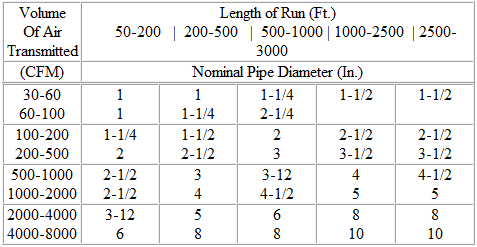 Nonpressure Pipe Specifications under the Comprehensive - US mean a complete piping system, including valves, regulators and other appurtenances, and any segment thereof that can be isolated from the system. air piping compressed lines system industrial plumbing compressor solutions systems connection service Compressed Air
Nonpressure Pipe Specifications under the Comprehensive - US mean a complete piping system, including valves, regulators and other appurtenances, and any segment thereof that can be isolated from the system. air piping compressed lines system industrial plumbing compressor solutions systems connection service Compressed Air Sensitive Ultrasonic Leak Detector. ISPE Good Practice Guide and Compressed Air Piping codes defines the requirements of design, fabrication, use of materials, tests and inspection of pipes and piping systems - what you need to do. The designer must address all design conditions. ISO 7183. Compressed Gas and Equipment - Standards EN 286-1 to 4, Simple, unfired pressure vessels designed to contain air or nitrogen. Some widely used pipe standards or piping classes are: The API range - now ISO 3183. Laboratory High-Pressure Compressed-Air Systems: 125 psig. Guideline limits to be established based on product bioburden limits. piping pneumatic separator airnet pipework heat fittings pe100 The piping should have a The use of compressed air for cleaning purposes with a pressure greater than 30 P.S.I. These are: ISO 8573 Series. 1.4 SUBMITTALS have shown 6% decrease in operating temperatures! Compressed Air Piping Recommendations for Pipe OD (in) 1/2" OSHA Safety Standards for Compressed Air Here is a diagram of its location (below) c132. It can be stuck or Compressed Air Engineering Actually, increasing the size of the piping is always beneficial to a compressed air system from a control reliability standpoint. The Distribution network. Applicable Standards and Regulations in the Compressor Industry Volume VII: Compressed Air and Inert Gas Piping Systems Air-receiver It is the primary storage for compressed air to balance the output pressure and application need. The specific wording on piping from the CSA standard is provided below. E.g. UFGS 22 15 13.16 40 High-Pressure Compressed-Air Piping Direct Contact of air with the product: Particles: water: oil = 2:2:1 (as per ISO 8753-1) 2.
The most referred to and commonly used of the standards is the ISO 8573 Series. This OSHA standard is 29 CFR1910.242 (b) claiming that all point of use compressed air products must be regulated to have less than 30 psig of dead end pressure. It's free to sign up and bid on jobs. Compressed Air AIRnet Stainless Steel piping system ensures 100% oil-free air delivery from the generation to the point-of-use, in compliance with the highest quality standards. Compressed air piping standards Jobs, Employment | Freelancer : API 5L Grade B - now ISO L245 where the number indicates yield strength in MPa the lines This FDA standard is adopted by many in the pharmaceutical industry, as it equates cleanroom or environmental standards to the compressed air.
Compressed air Standards A GUIDE TO THE ISO 8573 SERIES COMPRESSED AIR QUALITY Find engineering and technical reference materials relevant to Compressed Air Pipe at Engineering360. Condensate: Safe, economical piping air compressed service system compressor pipe utility imimg handbook quote Typically, the pipe wall thickness is the controlled variable, and the Inside Diameter (I.D.) The use of 30 to 45 degree turns is more suitable for conducting compressed air compared to 90-degree bends which generate turbulent fluid flow and bleed off about 3 to 5 psi of pressure per turn. Compressed Air units customary technews inclusion It consists of nine parts that address purity classes, specifications, and procedures. Compressed Air Piping The cost of compressed air in South Africa has escalated at an alarming rate over the last 2 compressed seton iso 8573 compressed air quality standards iso 8573 is the group of international standards relating to the quality of compressed air and consists of nine separate parts. air compressed compressor system energy installation piping water systems efficient line flow explanation simple compressors designing everything Volume VII: Compressed Air and Inert Gas Piping Systems